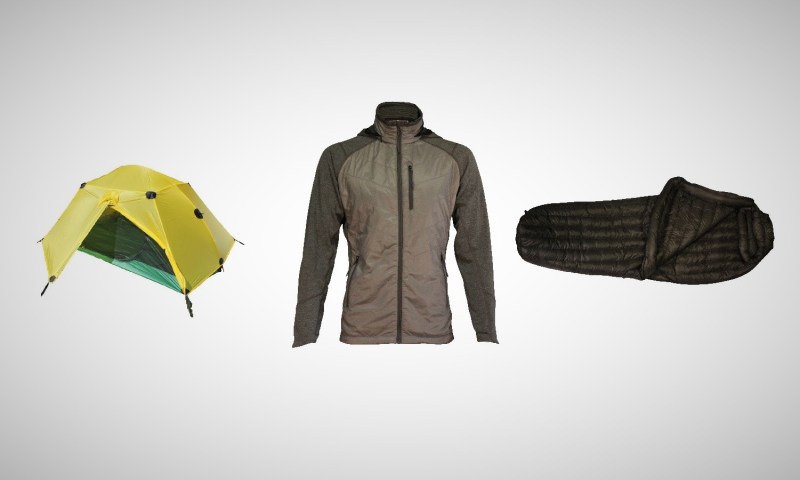Among serious climbers, ski touring aficionados, and backcountry travelers, few brands evoke the ideals of fast and light like Brooks Range Mountaineering. Born from a small cadre or mountaineers and backpackers, their roots trace a lineage of ski mountaineering lines in Alaska, thru hikes down the Pacific Crest Trail, and backcountry campgrounds for decades. They still maintain a small advisory board of athletes and guides that truly beat on each jacket, tent and sleeping bag they make, ensuring the pieces of gear that make it market are the best. We got a sneak peak of the spring line at Outdoor Retailer this year, and are excited to put some of it to the test.
Related: Ski Season Preview: Salomon MTN Collection | Jimmy Chin’s Meru
Hybrid Wool Jacket
Polartec Alpha insulation was originally designed for US Special Operations forces carrying heavy loads at high altitude. It has excellent thermal insulation, and also breathes better than any synthetic puffy jacket we’ve tried. Brooks took Alpha as a core insulator, and added Polartec’s new Power Wool Merino in the sleeves. The result is a jacket that stands up to the rigors of winter travel in the mountains, handles stop and go aerobic activities, and has the silhouette of a classic mountain jacket. If you’ve got spring break ski plans, this needs to be on your list.
Drift 20 Sleeping Bag
Utilizing 850-fill power DownTek water repellant goose down, the Drift line of sleeping bags combine ultimate warmth with serious comfort touches. The all new 20-degree rated bag is cut with Brooks’ Semi-Rec pattern, making it roomier than a typical mummy bag. The high fill down and ultralight face fabric keep weight down so you can pack it in to camp all year long. At a twenty degree rating, it is a great 3-season bag for high mountain adventures, and can last into the winter with a liner or if you live a little further south than our Rocky Mountain testing grounds in Utah.
Tension 30 Tent
The Tension 30 packs an impressive thirty square feet of livable space into a package that weighs just under two and a half pounds. Using a single carbon fiber pole, it maximizes space with nearly vertical walls and a no-drip vestibule for gear. Every surface (aside from the mesh upper body) is silicone impregnated nylon, ensuring that both your tent base and rainfly keep rain, dew, and snow firmly out. This tent will have your friends drooling over it at every backpacking campsite all summer long.






